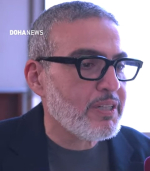
According to the Office for Budget Responsibility (OBR), net migration is expected to 'settle' at 245,000 a year, which is an increase of 40,000 since November. The Treasury watchdog has
revised its projections based on large numbers of students and arrivals from Ukraine and Hong Kong. It also pointed out that visas granted under the post-Brexit system, mostly to nationals from outside of the EU, have played a significant role in increasing the figure. These findings were revealed in the latest OBR outlook, published alongside the Spring Budget. However, Downing Street declined to comment on whether the government still held the ambition of reducing net long-term immigration to the tens of thousands.
The OBR report stated that 'net migration flows settle at 245,000 a year, rather than the 205,000 assumed in our November forecast and 129,000 in our March 2022 forecast.' The body also said that these migration estimates were 'consistent with relatively high recent rates of actual net migration, which the ONS estimates reached over half a million in the year to mid-2022'. The increase in net migration was attributed to 'the resumption of international travel following the pandemic, especially among foreign students, with student visas reaching a record high of 490,000 in 2022.' The watchdog also indicated that the 'post-Brexit immigration regime that began in 2021 and issued 800,000 visas in its first year of operation (only 50,000 of which were for EU citizens who did not require a visa under the previous regime)' has contributed to the rise in net migration. Another influence was 'other changes, including 129,000 British National Overseas visas to Hong Kong nationals and 210,000 visas to Ukrainian nationals.'
The OBR report said that the increased economic forecasts are based on higher immigration. It states, 'A larger population, due to increased net migration, adds 0.5 per cent to potential output in 2027.' However, despite the improvement in the economic forecast, Britons still face the worst decline in living standards since records began in the 1950s and the highest tax burden since the Second World War. The Treasury watchdog highlighted the ongoing misery despite its latest forecasts saying the outlook has improved since the Autumn.
The economy remains on track to shrink by 0.2 per cent this year, although Jeremy Hunt boasted that UK plc will avoid technical recession, defined as two successive negative quarters. In documents accompanying the Spring Budget, the watchdog said the Chancellor is only on track to meet his debt targets by the narrowest of margins after a big splurge on childcare and freezing fuel duty.
The OBR report said real household disposable income (RHDI) per person is expected to fall by a cumulative 5.7 per cent over the financial years 2022-23 and 2023-24. 'While this is 1.4 percentage points less than forecast in November, it would still be the largest two-year fall since records began in 1956-57,' the OBR said. 'The fall in RHDI per person mainly reflects the rise in the price of energy and other tradeable goods of which the UK is a net importer, resulting in inflation being above nominal wage growth. This means that real living standards are still 0.4 per cent lower than their pre-pandemic levels in 2027-28. But they are 0.6 per cent higher than we forecast in November thanks to lower market expectations for medium-term gas prices and the upward revision to potential output.' Photo by Dpsu.gov.ua, Wikimedia commons.




































